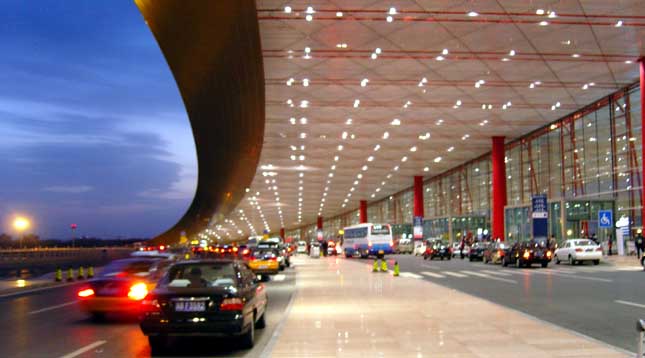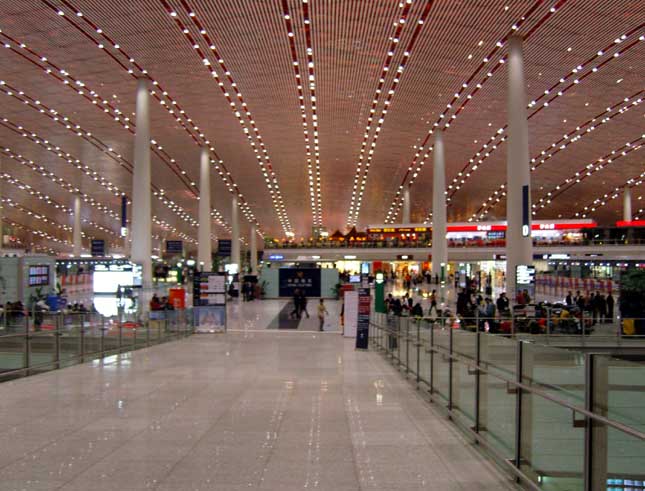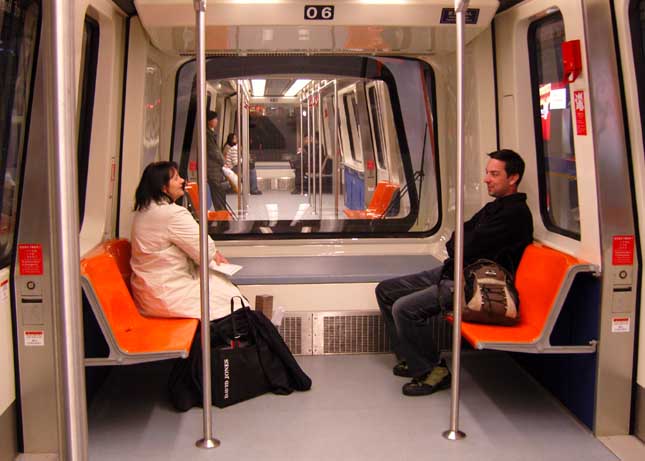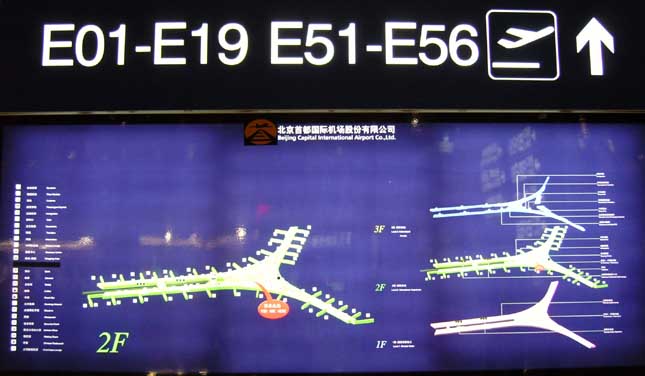Review: Beijing Capital Airport’s Terminal Three

BEIJING, April 9 – Beijing Capital Airport’s new Terminal Three opened to passenger traffic on March 26. Designed by Sir Norman Foster’s architectural practice Foster & Partners, the Dutch airport planners NACO and engineered by Arup, the new terminal is expected to handle the massive increase in passengers expected for the 2008 Olympics and China’s increased role in global economy from its entry to the WTO.
The new terminal will allow Beijing Capital airport to increase capacity from 27 to 60 million passengers annually by 2015. The same team of planners, architects and engineers were responsible for the Chep Lap Kok airport in Hong Kong.
We sent our intrepid staff to find out how the new terminal was stacking up.
Evaluating airports of course is not just departures, it’s also arrivals, and with a busy team of Dezan Shira & Associates Beijing office staff flying out to India, Europe and the United States over the past ten days – and back again – we bring you a first hand account of the facilities; and photos.
International departures
Entry was via taxi to the main concourse, which is very similar to Chep Lap Kok, with shops below, and shops and restaurants also on the mezzanine floor, also the site of the check in counters and immigration. Once through immigration however, a train is required (running every 3 minutes) to the departure lounges. These are in a modern, contemporary design, yet most shops were still unoccupied. Accordingly it is difficult to tell whether any book shops will be geared to Western language titles for long haul flights. The total time from arrival to departure gate was 10 minutes. However this was on the first day of operation. Marks out of ten for passenger service: Eight

The main hall covers both arrivals and departures, most shops remain closed, but should be opening soon
International arrivals
The airport of course is huge, and with heavy luggage there is a long way to walk to immigration. Long walks and equally long moving walkways make it quite a trek. A train is then required to access immigration, however signage is not clear, and many people were confused (there are three stops) as to where to get off.

Train carriages between immigrations and arrivals / departure lounges
The arrivals counters rapidly become busy when having to cater to two or more flights at the same time. There are only ten immigration points for foreigners and Chinese and no apparent ability to expand this. Arrivals are also on the mezzanine floor, with a lift required (there are only two) to access the ground floor and taxis, buses, cars etc. With heavy luggage, and reduced facilities for arrivals, we felt the arrivals procedure at Terminal Three was prolonged, awkward, and would possibly be prone to bottlenecks at the train, immigration and lift to main concourse areas. Coupled with that, our fragile object brought in on business class and marked as such was smashed at Terminal 3 arrivals with no staff to admit culpability. Complaints were met with a shrug. Marks out of ten for passenger service (without the damaged goods): Four. With damaged goods: Zero. What is the point of having priority baggage that is obviously fragile (it was a large framed picture) with fragile stickers all over it if they manage to break the frame in two and smash the glass? It was utterly careless if not deliberate. Be warned.
Total marks: 12 out of 20

Terminal Three plan: Signage and announcements were bilingual but not always complete, especially around the train stops, where there was a lot of passenger confusion over where to go
Summary
A great looking terminal; and China is happy to see you go. But it is far less accommodating upon arrival. While departure was a breeze, we do not recommend arriving at Beijing during peak flight hours, even with the new Terminal Three. Don’t even think about using baggage handling for fragile goods, China still has a very long way to go in its service industry, despite investing millions in fantastic buildings.
- Previous Article China rolls out 3G mobile network for trials
- Next Article Shanghai’s new terminal opens in Pudong, but where are the passengers?









